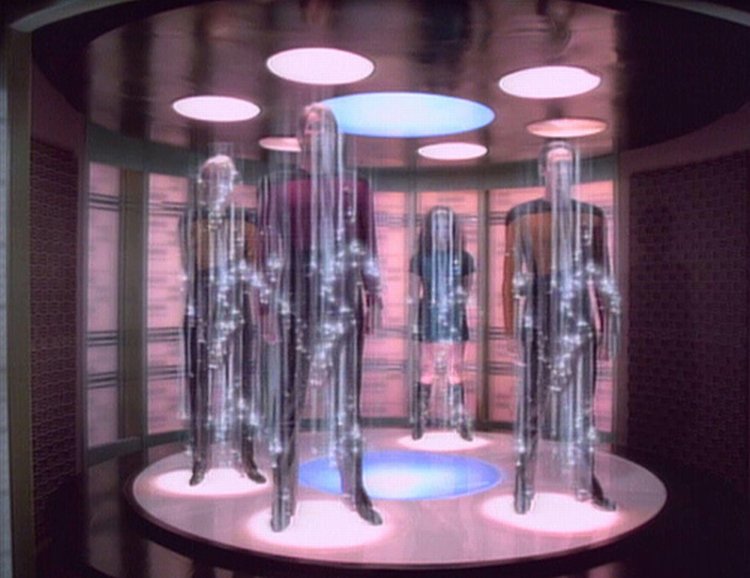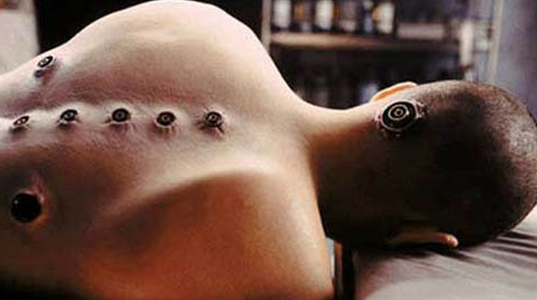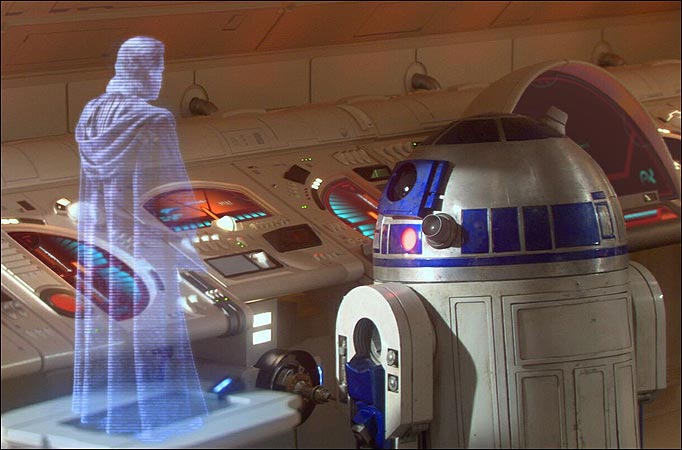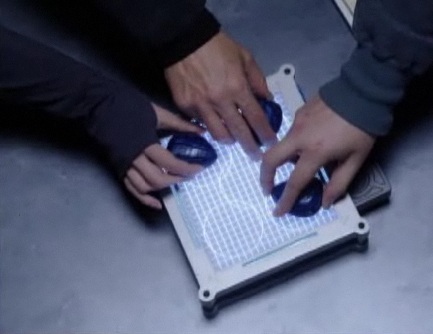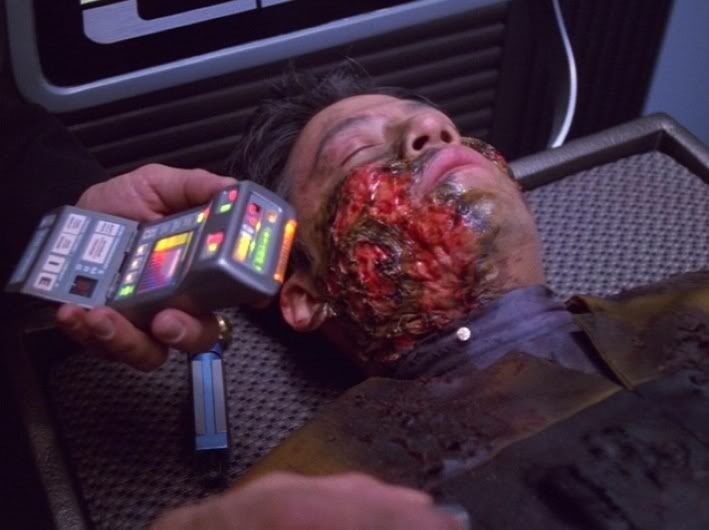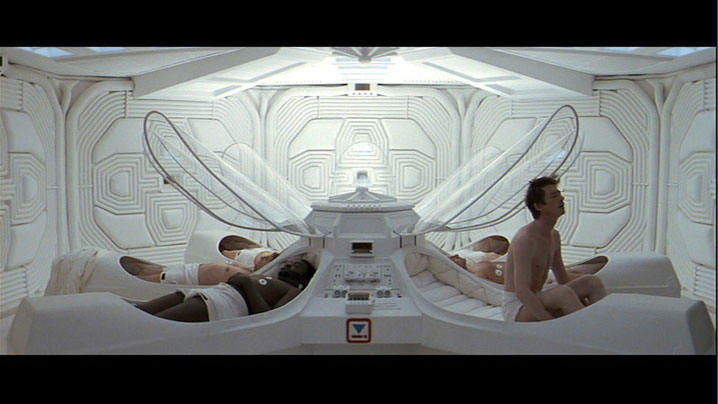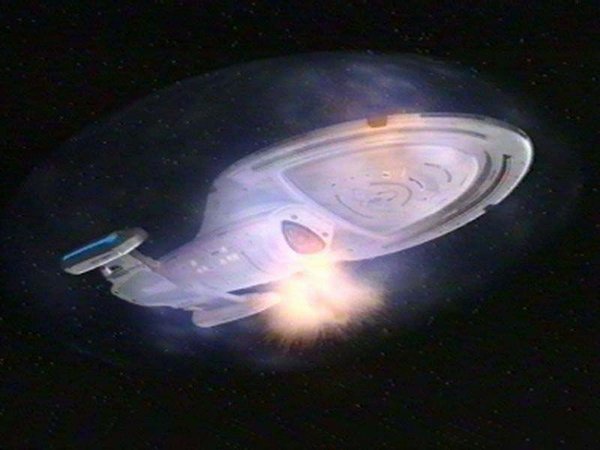In Pictures: Science Fiction Technology We Want For Real
Kevin compiled nineteen different technologies from his sci-fi-based dreams that he'd like to see made real. Could it be that he wishes he were The Hoff, Luke Skywalker, or your father? Perhaps. It's more likely that he has simply watched too many movies.
Transporter
In the Star Trek universe, the transporter was actually a way to save money. Instead of blowing the show's budget by creating scenes showing a spaceship landing on a planet, it was cheaper to just "materialize" the characters on the set. Transporters first appeared in the original pilot episode "The Cage," and remained as a primary mode of short-range transportation to planet surfaces and other ships. In the fictional realm, the technology broke down humans at a sub-atomic level and reconstructed them at a specific destination. Transporters were even deemed the safest way to travel, thanks to the use of a biofilter.
That wasn't the case in the movie The Fly. As seen in this disturbing flick, a scientist by the name of Seth Brundle created a transporter consisting of two pods. When he made the attempt to teleport himself, his pattern was merged with a fly. Eventually, he transformed into a man/fly monstrosity that just wanted to be loved.
Brain Downloads
Could brain downloads even be possible? After all, they're certainly made to look straightforward in the Matrix movies. We should be able to hook up to a machine and download the pilot training program for a Bell helicopter in seconds. Although the technology doesn't yet exist, scientists believe that we're almost there, and that neuroengineering is moving quickly from cochlear implants to devices that will actually enhance and speed-up thoughts. Dr. Bruce Katz, who received his Ph.D. in artificial intelligence from the University of Illinois and currently serves as an adjunct professor of computer engineering at Drexel University in Philadelphia, believes that humans will eventually be able to receive a prosthetic device that will allow thought downloads. "Ultimately, we want to be free of the limitations of the human brain," he said. "There are just too many inherent difficulties in its kludgy design--provided by evolution--to make it worthwhile to continue along this path."
Holographic Messaging System
A holographic-based messaging system could be both a good thing and a bad thing. On the positive side, using table-top holograms (as seen in the Star Wars movies) would be ideal when conversing with friends and family. Currently, webcams are great for bringing distant family members closer together. But holograms may offer a more in-person feeling, allowing increased interaction. On the negative side, wrong numbers could prove annoying. This device would also not be ideal after just getting out of the shower, rising from a deep sleep in the middle of the night, or when sitting on the porcelain throne. "Sorry mom, I’m a little busy."
Communication Stones
In the Stargate universe, a long-range communication stone and its accompanying platform is used when physical communication is not possible. The technology was created by the Alterans before they were divided into the Ancients and the Ori. The only drawback is that this technology requires two people, and their "essence" is exchanged. Simply put, if you're using a communication stone with Grandma, who's halfway across the globe, you take over her body while she takes over yours. This could be either a positive or a negative, depending on what the person on the other end of the line is doing with your body (Ed.: sicko).
Federation Sickbays
In Star Trek's timeline, the future is a place where money is unnecessary, children don't go hungry, and bones can be mended with the pass of a device. Medical technology in Trek's fictional future has not only inspired inventors of today, but gives us hope that tomorrow will bring healthiness not seen today.
Open wounds could be closed and healed in one sitting. Medicine could be "injected" into the skin without needles. A holographic doctor could even perform the same duties as its organic counterpart. Many Trek technologies, such as the aforementioned hypospray, tricorder, scanning beds, and laser blades, are already making their way into real-world medical facilities.
Get Tom's Hardware's best news and in-depth reviews, straight to your inbox.
Power Ring
In the DC Comics universe, the power ring can do anything. It's limited only by the imagination of the wielder. The drawback is that this technical wonder holds a limited charge, and must be recharged by energy emanating from an orb called Starheart. Still, that's a minor setback considering the ring can allow hyperspace travel without the need for a ship, serve as a universal translator, shoot energy blasts, render the wearer invisible, enable time travel, provide a galactic encyclopedia, create a telepathic link, provide superhuman strength, heal physical injuries, and many many more abilities. Typically, these rings are worn by members of the Green Lantern Corps. Humans in the real world can pick up a replica in comic shops and online retail outlets without the associated abilities.
Hybernation Chamber
The reasons justifying development of a hibernation chamber should be fairly obvious.
In the medical field, the device could suspend patient vitals in order to prevent the progression of untreatable terminal illnesses until more advanced treatments could be developed. On a scientific level, the chamber would be ideal for long trips across the solar system (maybe to Mars or the moons of Jupiter), eliminating the psychological problems stemming from long periods of isolation (there's also that issue of aging). For those looking for adventure, the chamber could be used as a time capsule of sorts, allowing "passengers" to sleep for fifty or more years so that they could "visit" a new world.
Deflector Shield
Forget front and rear bumpers. If automobiles could incorporate a little Star Trek technology, there would be far fewer traffic accidents.
In the fictional realm, shields are typically made of energy or charged particles used to deflect energy, ballistic weapons, and natural galactic bodies. But they can only repel so much damage. After repeated attacks, shield strength is often exhausted, and damage becomes unavoidable.
It seems unlikely that a force field would be able to prevent collisions altogether; more likely would be a barrier that might soften a blow, protect against particle damage from rocks or insects, and take the guesswork out of parking in tight spaces.

Kevin Parrish has over a decade of experience as a writer, editor, and product tester. His work focused on computer hardware, networking equipment, smartphones, tablets, gaming consoles, and other internet-connected devices. His work has appeared in Tom's Hardware, Tom's Guide, Maximum PC, Digital Trends, Android Authority, How-To Geek, Lifewire, and others.
-
dragonsqrrl I think it's funny just how many of the "science fiction technologies" on your list come from Star Trek. If you want kick ass futuristic gadget pron, Star Trek is definitely the place to go. Transporters, shields, Replicators, Holodecks, photon torpedoes, WARP DRIVE?!... damn I'm having an epic flash back through the 90's.Reply -
rohitbaran Fix the article Toms. Clicking on one picture actually takes to the next picture and its description.Reply -
agnickolov Also, the last picture is missing - it ends with 19 of 20. Or perhaps the count is wrong?Reply -
haplo602 agnickolovAlso, the last picture is missing - it ends with 19 of 20. Or perhaps the count is wrong?Reply
yes, 7 of 9 MIA :-) -
Bah, I just want a self-drying jacket and self-tying sneakers ala Back to the Future 2. And flux capacitor > tardis. :pReply
-
Olle P RoboCop as such is a nifty idea, but I think it really needs to be combined with the cognitive AI to function properly.Reply
There's a myriad of situations where breaking a law might be better than not breaking one, and the police officer must be empathic with such situations and handle them well. (Think of the Judge Dredd movie, where a poor guy flee from some thugs by hiding inside a robot, only to be arrested by Dredd for that offence.)
Also, in the RoboCop movie there's a scene where RoboCop stop a robber in a grocery store, and RoboCop completely demolish most of the store's interior instead of making a clean arrest. That's not how I want a cop to behave! -
joytech22 I'm surprised they didn't mention space ships or something, I like halo's for showing how most architectures would design ships, they understand they don't need to be aerodynamic in space but they need room and power.Reply
Just like buildings.
